AMD Ryzen 7 5800U Review
The Ryzen 7 5800U is AMD's reply to Intel'south Tiger Lake and is their fastest available chip for ultraportable and ultrathin laptops. This is the first Ryzen Mobile 5000 U-series processor to land in our office even though it was announced way back in January, only like many releases this year, it's taken a fleck of actress time to actually hit the market.
When Intel launched Tiger Lake concluding twelvemonth, they were able to reclaim the operation crown in many key workloads for thin and light laptops. While they only had up to four CPU cores compared to eight in AMD's line-upward, Intel was able to deliver class-leading unmarried thread and graphics operation, topping the charts in many lighter applications you might expect to utilise on this kind of machines.

Simply with Ryzen 5000, AMD is back to nullify Intel's key advantage. The Ryzen 7 5800U retains its 8-core CPU design, double the cores of Intel's Core i7-1165G7 and 1185G7, simply bumps up those cores to use the newer Zen three architecture. With a significant bump to IPC, a redesigned cadre complex with a single CCX, double the L3 enshroud, and power optimizations – AMD claims much college single-thread functioning versus Ryzen 4000 and multi-thread gains that will only extend AMD's lead on Intel.
However, not every expanse to Ryzen Mobile 5000 has been updated. The Ryzen vii 5800U features the same Vega GPU design, with eight compute units, which may not be sufficient plenty to shell Intel's Xe GPU. The multimedia engine, memory controller, PCIe layout and other features also remain very similar to their last-gen APU.
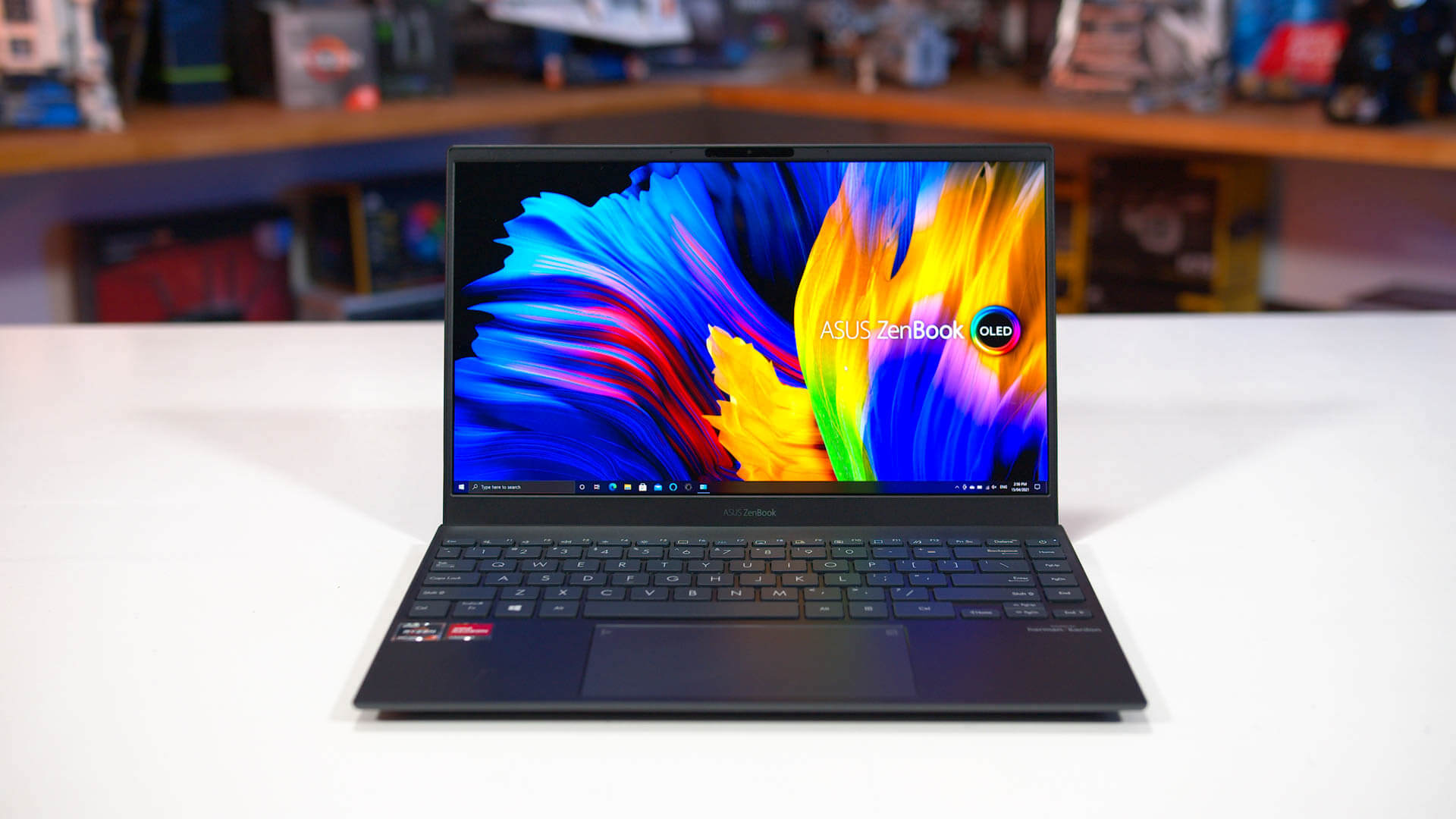
AMD's line-up is a picayune confusing in that not all Ryzen Mobile 5000 U-series processors apply Zen 3 CPU cores. The Ryzen 7 5800U we're looking at today does, it's their new Cezanne die. But the Ryzen 7 5700U that sits directly below it remains a Zen two processor, using a refreshed die AMD are calling Lucienne. This is something to keep in heed (and further explained hither) when buying a new Ryzen vii 5000 series bit.
The Ryzen 7 5800U packs eight cores and 16 threads, with a base clock of 1.9 GHz and a maximum heave frequency of 4.4 GHz. At that place's 16MB of L3 enshroud and 4MB of L2, along with 8 Vega compute units clocked up to 2.0 GHz. This is all built on TSMC's 7nm manufacturing node with a default TDP of 15W. The 5800U ends upwardly every bit a fully unlocked Cezanne die but isn't quite equally highly clocked as AMD's H-series fries that, for example, button boost frequencies upwards to 4.8 GHz.

Despite hitting the absolute highest frequencies this silicon can practice, the Ryzen 7 5800U does provide some frequency improvements over the Ryzen seven 4800U. The base clock is 100 MHz higher and the boost clock 200 MHz higher, which is in improver to the IPC gains of Zen iii versus Zen 2. The GPU is besides clocked 250 MHz college although it uses fundamentally the aforementioned Vega pattern and compute unit count. Nosotros also go double the L3 cache as expected.
The arrangement we're using for testing the 5800U is Asus new ZenBook 13, which is a very compact slim and light notebook with an impressive OLED display. I'm glad this new wave of ultraportables coming to market are using OLED displays, considering this affair is seriously impressive in terms of contrast, black levels and colors. Even though it'due south merely a 1080p screen, the benefits to using OLED are massive, including proper HDR functionality.

Aside from OLED, we're besides getting the Ryzen 7 5800U in multiple power modes, 16GB of LPDDR4X-3733 memory, and in my unit 1TB of storage. The build quality is quite nice, I love how portable this thing is, it has a nice large touchpad and a decent keyboard. And that'southward without even talking about performance even so. Unfortunately it does lack Thunderbolt which is a common feature omission on AMD laptops.
Like our previous U-series processor testing, today we are benchmarking the Ryzen 7 5800U in both its 15W and 25W power configurations (long term power limits). However, as with all laptops tested, there'south as well a heave catamenia, in the case of this laptop up to well-nigh 30W. The 5800U will be pitted up against other laptop processors also tested at 15W and 25W, although in the case of Tiger Lake, we've run Intel's design at 15W and 28W, as 28W is the highest ability config available compared to 25W for AMD.
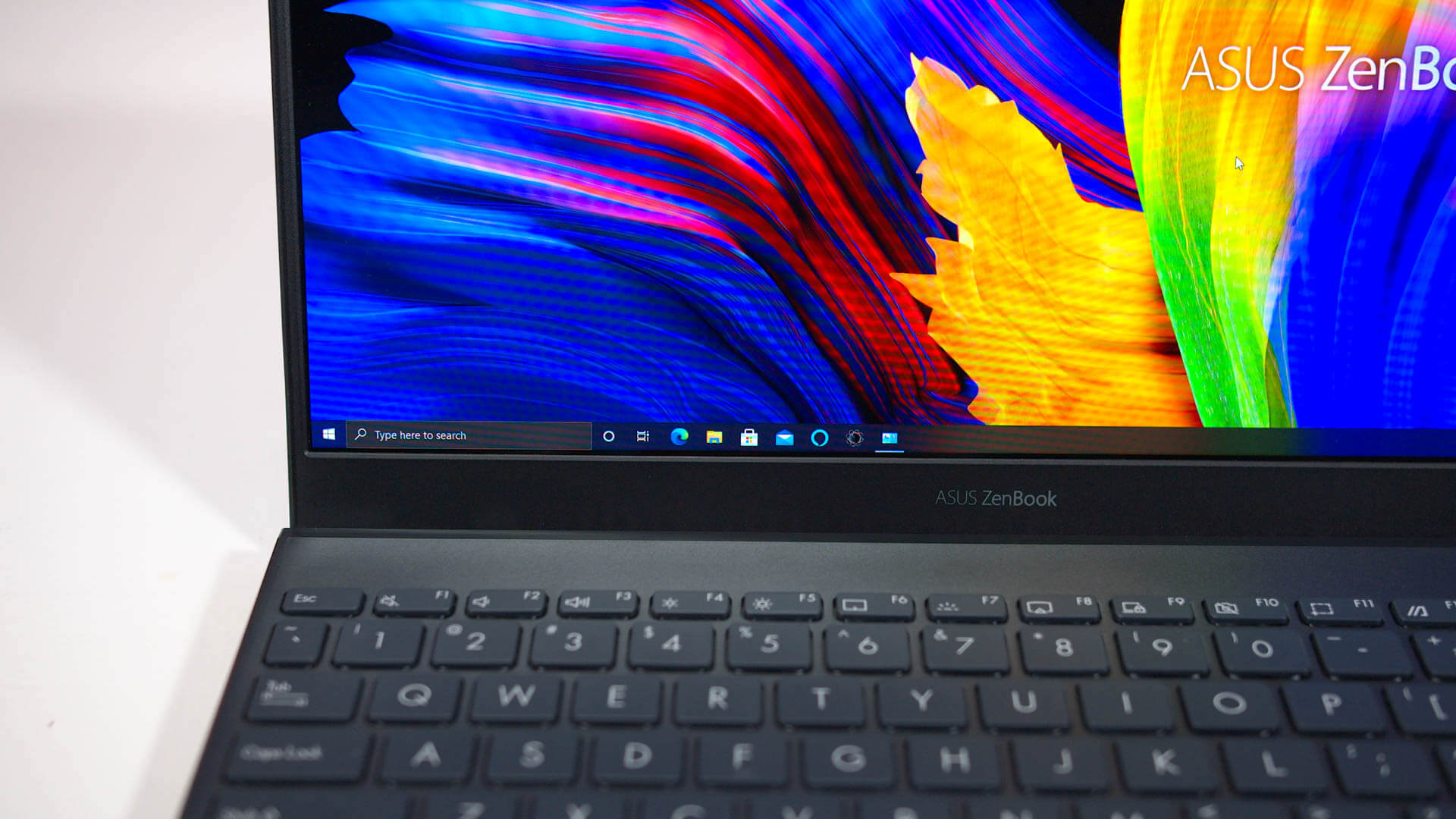
Our benchmark charts are an average of results taken from multiple laptops running at the same long term power configuration. Here you lot can see the full listing of laptops we've tested. Nosotros test this way to give you lot a general thought of how laptop processors compare without variables like OEM configurations and cooling designs having much influence.
For this review, nosotros should also notation that we re-tested the Ryzen vii 4800U with heave beliefs that closely matches the 5800U in this ZenBook 13, only and then nosotros could have the absolute all-time apples-to-apples comparison betwixt AMD processor generations.
Benchmarks
In Cinebench R20 we get our first wait at the Ryzen vii 5800U's multi-threaded operation. At 15W nosotros don't see a significant performance increment over the Ryzen seven 4800U, merely a couple of percent all up. All the same at the higher 25W configuration, the 5800U ends up about 5% ahead of the older design.
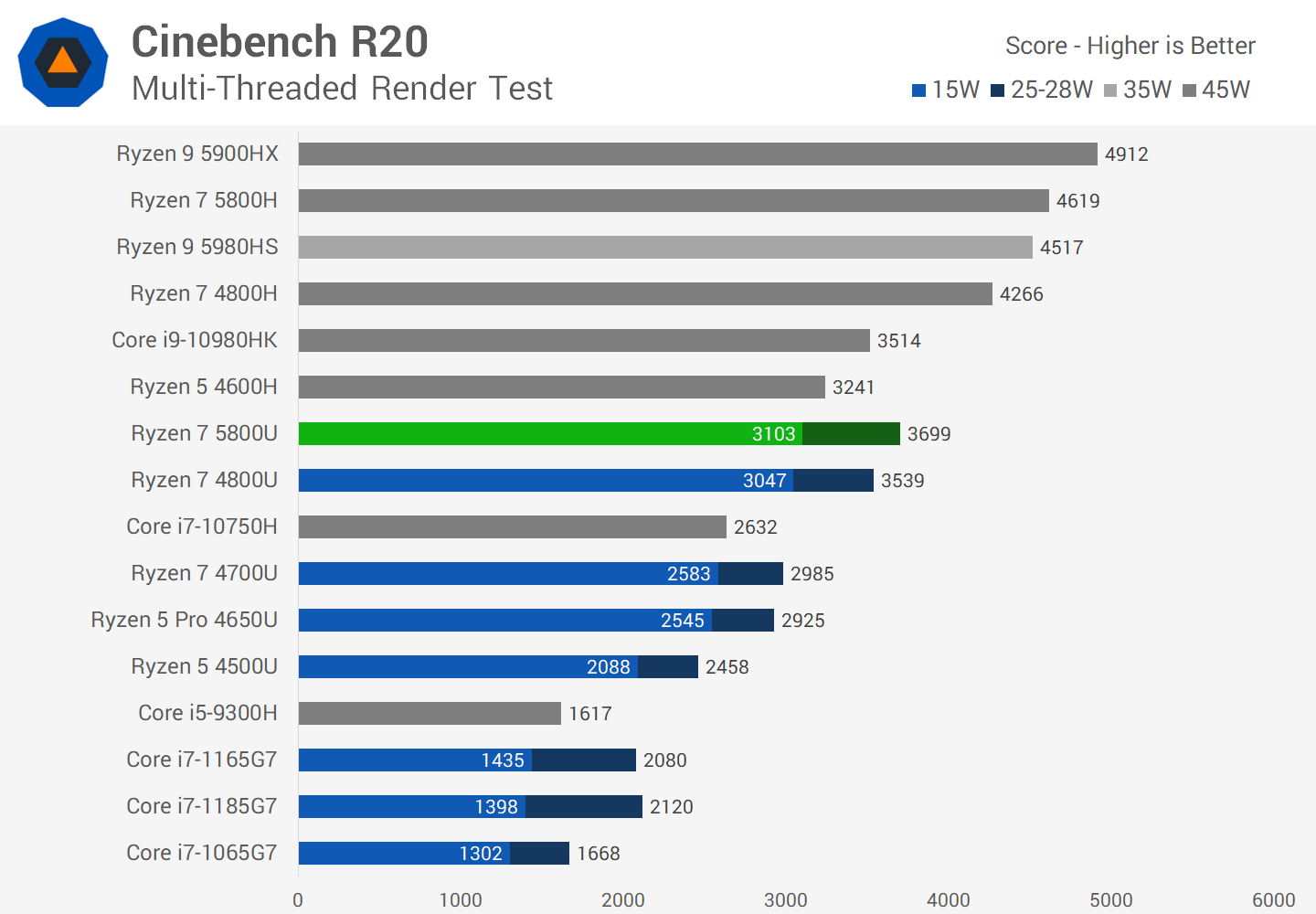
This small-scale performance uplift allows the 5800U to extend its pb on Intel. In the higher power class, AMD holds a 75 to 80 percent performance lead, which is absolutely massive when comparing ii processors at a similar cost point. At the lower 15W power spec, AMD'due south design appears to be more than efficient again, pushing their pb up to over a 2x advantage. This sees AMD's CPU sit in the region of H-serial processors similar the Cadre i7-10750H and Cadre i9-10980HK for multi-thread functioning.

The big question around Ryzen Mobile 5000 though isn't multi-thread operation, simply single-thread performance, and how that compares to Tiger Lake. The results are promising: the 5800U is 14% faster than the 4800U in Cinebench R20 single-thread, and it remains a state of affairs where single-thread operation is well-nigh the aforementioned whether testing at 15W or 25W. That's because a single Zen 3 core operating at up to 4.four GHz tends to simply consume about 15W of power, giving us no gains at the college power spec.
When compared to Tiger Lake there'south a few interesting things at play. Intel'south pattern does benefit a lot from operating at 28W, fifty-fifty for unmarried-thread performance, as clocking a Willow Cove CPU cadre up to equally high every bit iv.8 GHz consumes more than 15W. This gives AMD a modest performance reward in the lower power grade of around 5%. Still when each flake is given more power and immune to run in the 25W range, the 5800U fails to lucifer Tiger Lake and ends upwards 5% behind the Core i7-1185G7.

A few people accept been request for Cinebench R23 numbers in our previous reviews so here you are. While the scores are different using a 10 minute run, the margins between each processor don't alter substantially. And nosotros discover similar things when looking at the unmarried-thread results as well.

Handbrake is a actually interesting benchmark for Ryzen 5000. At 15W, we actually meet a performance regression for the Ryzen 7 5800U compared to the 4800U. Not by much, but it is three% slower in this test, which will disappoint those expecting performance gains in this long term, heavily multi-threaded workload. However, when given the actress power allotment of 25W, the state of affairs flips and now the 5800U is faster, about 5% faster in fact.
What appears to exist happening here is that Ryzen Mobile 5000 has a college performance pb over Ryzen Mobile 4000 the larger the power budget is. Information technology'south roughly equal or slower at 15W, nigh 5% faster at 25W, and then in the H-series with the 5800H ends upwardly about eight% faster at 45W. In other words the margin between 15W and 25W has grown this generation, and the sweet spot for Ryzen now appears to be in the higher power course.
While a lot of this word has centered effectually the 5800U versus 4800U, ultimately either of these processors destroys Tiger Lake at CPU video encoding with margins of at least 70%. It's merely not possible for a quad-core design to be competitive with an eight-core blueprint for these sorts of workloads.

In Blender, again nothing overly different from what nosotros just showed in Handbrake. The Ryzen 7 5800U is still in a class-leading position, it just doesn't fundamentally change much compared to what the 4800U was providing.


In GCC code compilation in that location is a grouping of Ryzen processors at 15W, which only brainstorm to split themselves at 25W where the 5800U is fastest. The 5800U ends up between lx and seventy% faster than Intel's Core i7 Tiger Lake processors, and we see like margins in Chromium compilation also. If yous are a coder that does a lot of compilation work and you lot want a slim and light arrangement, and then the final ii generations of Ryzen are going to be a pretty expert choice.

MATLAB's born benchmark is a proficient mix of multi-threaded, unmarried-threaded and cache heavy tests. It's here we see some of AMD's IPC gains come up to play, assuasive the 5800U to easily outperform the 4800U in both power classes. The 5800U is 23% faster, and I suspect a lot of that is down to the doubling of L3 cache. It also puts the 5800U at least eleven% ahead of Intel'south Tiger Lake processors, so with the design improvements AMD have made, they've been able to go from slower than Intel, to faster than Intel.

Our Microsoft Excel workload is likewise heavy on processor cache, then the 5800U sees a performance gain of 23% again compared to the 4800U. Every bit this is a multi-threaded workload, Ryzen goes from being simply slightly faster than Tiger Lake in the prior generation, to beingness essentially faster. The 5800U sees a performance lead of 72% at 15W and over 40% at 25W.

In PCMark 10's Essentials workload, which measures basic things similar spider web browsing and app loading, information technology's another good result for the Ryzen vii 5800U. Thanks to IPC improvements, the 5800U leapfrogs Tiger Lake into the leading position for U-serial processors, with most a 5% lead on the 1165G7, or an eleven% proceeds over the 4800U. This isn't a groundbreaking divergence looking at AMD versus Intel just it does point to similar or slightly better basic app functioning on a peak-end Ryzen configuration.

In the Applications test which measures Microsoft Function performance and the Border web browser, we end upwardly with some other somewhat interesting situation betwixt AMD and Intel. At 15W, the 5800U essentially matches Tiger Lake's performance, however in the college power course, Intel is able to pull alee, so at 25W the 5800U comes in 10% behind the 1185G7. While the 5800U does show a salubrious ten% uplift over the 4800U this isn't plenty to close the gap in functioning to Tiger Lake.

In vii-Zero Pinch nosotros see one of the largest gains for the Ryzen 7 5800U over the 4800U: 25% faster at 15W. Compression was a weak spot for AMD'south Zen 2 APU designs just the increased cache and IPC improvements have sent the 5800U upwardly the charts, even ahead of the Ryzen 7 4800H. Tiger Lake processors are slower here due to their lack of CPU cores.

As for decompression, this was always Ryzen'south strong suit, so nosotros don't see a big functioning proceeds comparing the 5800U and 4800U, the newer Zen 3 chip is only marginally alee. As with compression, Intel's quad-core Tiger Lake designs can't keep up here and get destroyed by Ryzen in what is the largest margin between these two chips in CPU-bound workloads.

In AES-256 cryptography, AMD has massively improved performance with their Zen 3 CPU cadre, information technology'southward something like 65% faster when testing on a single-core, which allows united states to remove memory bandwidth differences. However, Intel still holds the lead hither with their Tiger Lake designs, and ultimately the 5800U is most 12% slower.

Acrobat PDF exporting has been the Achilles heel of AMD's single-thread performance for some time in laptop form factors, merely that has changed with Zen 3. The Ryzen vii 5800U is now able to friction match Intel's Tiger Lake designs like the Core i7-1165G7, although the Core i7-1185G7 at 28W is withal a bit faster overall. Like other workloads, the 5800U is 20% faster than the 4800U here.

Adobe Photoshop performance was a big reason to buy a Tiger Lake processor over a Ryzen processor in the previous generation. That's not really the example whatever more. Intel is yet slightly faster than the 5800U in the higher power class, merely the margins are within 5%. Meanwhile the 5800U is able to pull 8% ahead of the 1165G7 at 15W, and so information technology's a bit of a much of a muchness and will depend on the verbal laptop configurations yous're looking at. I approximate the takeaway here is in general AMD has been able to equalize operation in this application.

In DaVinci Resolve using the Puget Systems criterion, ultimately at that place isn't much deviation betwixt the Ryzen seven 5800U and Core i7-1165G7 for video rendering. The 1165G7 benefits from its faster GPU, merely the 5800U's faster CPU nullifies that advantage. In fact at 15W the 5800U is up to 15% faster every bit a upshot. However if you exercise plan on doing a lot of video editing on your laptop, I would all the same strongly recommend something with a discrete GPU as it will be significantly faster.

Information technology'due south a pretty similar outcome in Adobe Premiere using Puget System's consign test. The 1165G7 is slightly faster than the 5800U at 28W, but a bit slower at 15W. And then over again it'south going to be a situation where the power capabilities of the laptop matter. These sorts of systems aren't besides bad for video editing in Premiere in my opinion, although yous should wait to only be capable of lighter stuff unless you buy a organization with a discrete GPU.
Gaming Performance


Now it's fourth dimension for some integrated graphics game benchmarks. To be honest the results hither aren't very interesting so I'm only going to show three games otherwise you lot'll all get bored very quickly. Here's Grand Theft Auto Five looking at 15W CPUs. The Ryzen seven 5800U delivers identical iGPU performance to the Ryzen 7 4800U. In this title, this allows the 5800U to be 23% faster than the Intel Core i7-1165G7 when using the same LPDDR4X retention. At 25W in the aforementioned title, again there is no functioning difference. Here the Ryzen processor matches Tiger Lake.


In Gears 5 running at 1080p medium settings, which is heavily GPU bottlenecked, there is no performance difference betwixt the 5800U and 4800U at 15W. The 5800U is 13% faster than the 1165G7 in this test. However when switching up to 25W, at present the Intel design is faster, holding a 23% lead on the 5800U. Again, the 5800U delivers the same performance as the 4800U.

Then in Rainbow Six Siege surprise, surprise, the Ryzen vii 5800U and 4800U deliver the same functioning whether we are talking 15W or 25W. In both configurations, Intel's Xe GPU in their 1165G7 delivers better functioning, and in the best case, with up to a 35% performance lead. So everything that nosotros talked nigh in our Tiger Lake review notwithstanding holds true every bit AMD has not improved iGPU performance this generation.
Performance Breakdown


Before jumping into the conclusion, hither are some head to caput comparisons. Looking at the Ryzen 7 5800U up against the Ryzen 7 4800U at 15W, we can run into some articulate trends. In multi-thread performance, the 5800U isn't significantly faster than the 4800U, in some workloads information technology'southward faster, and in others information technology'due south slower. But in applications that are either lightly threaded, or can take advantage of Cezanne's specific design improvements like double the cache, functioning can be 20 to 25% faster.

In the college power grade, the Ryzen 7 5800U is virtually always faster. Multi-thread performance transitions from about even, to almost v% faster on average. Meanwhile, we see the aforementioned single-thread operation gains every bit in the 15W class, which are very solid. And this is highlighted further when comparing the 5800U at 15W and 25W, where the 25W configuration is roughly even at single-thread only tin be as much as 25 to 30 pct faster for multi-threaded workloads.

When the Ryzen vii 5800U is pitted up confronting the Intel Core i7-1185G7 in the higher 25-28W power class, in that location is a wide range of results. The 5800U is significantly faster at multi-threaded CPU workloads, typically in the seventy%+ range. Withal for lightly threaded and single-threaded workloads, the 5800U can be five to ten% slower, although this isn't e'er the instance. Again like story with the 5800U versus 1165G7.

However at 15W, the 5800U is generally faster than the Core i7-1165G7 at all workloads. Multi-threaded workloads have a 2x operation advantage on AMD, while lightly-threaded tasks tin can be 5 percent faster or so.
What We Learned
The Ryzen vii 5800U is finally hither, the benchmarks are in, and now we have a bang-up idea of how AMD's Zen three APU performs in a low ability class. Like we saw in the H-series for gaming laptops, when yous compare this generation to AMD'due south prior release, Renoir, the major footstep forward AMD has taken is in single- and lightly-threaded application operation.
The remainder of this design is largely an iteration on the final release, which was a major overhaul, and even in some cases like the iGPU, operation goes unchanged.

The gen-on-gen gains AMD is providing with the 5800U versus 4800U in the 25W power course are decent: five% improve multi-thread performance is a footling disappointing, but unmarried-thread gains anywhere from 15 to 25% put a good showing. Given that lighter workloads are more common on thin and lite systems, single-thread functioning is nigh important for U-series fries, so big gains in apps like Microsoft Office, web browsing, Photoshop and PDF exporting are going to exist a boon for everyday users.
The improvements seen in these lighter apps do carry over to the lower power course at 15W, just I was less impressed with the 5800U hither overall. Multi-threading operation is largely unchanged compared to the prior generation, and there were fifty-fifty a few performance regressions, which you lot never want to run into.
Just that's comparing AMD to AMD... and the real battle this generation is between Ryzen Mobile 5000 and Intel Tiger Lake CPUs.
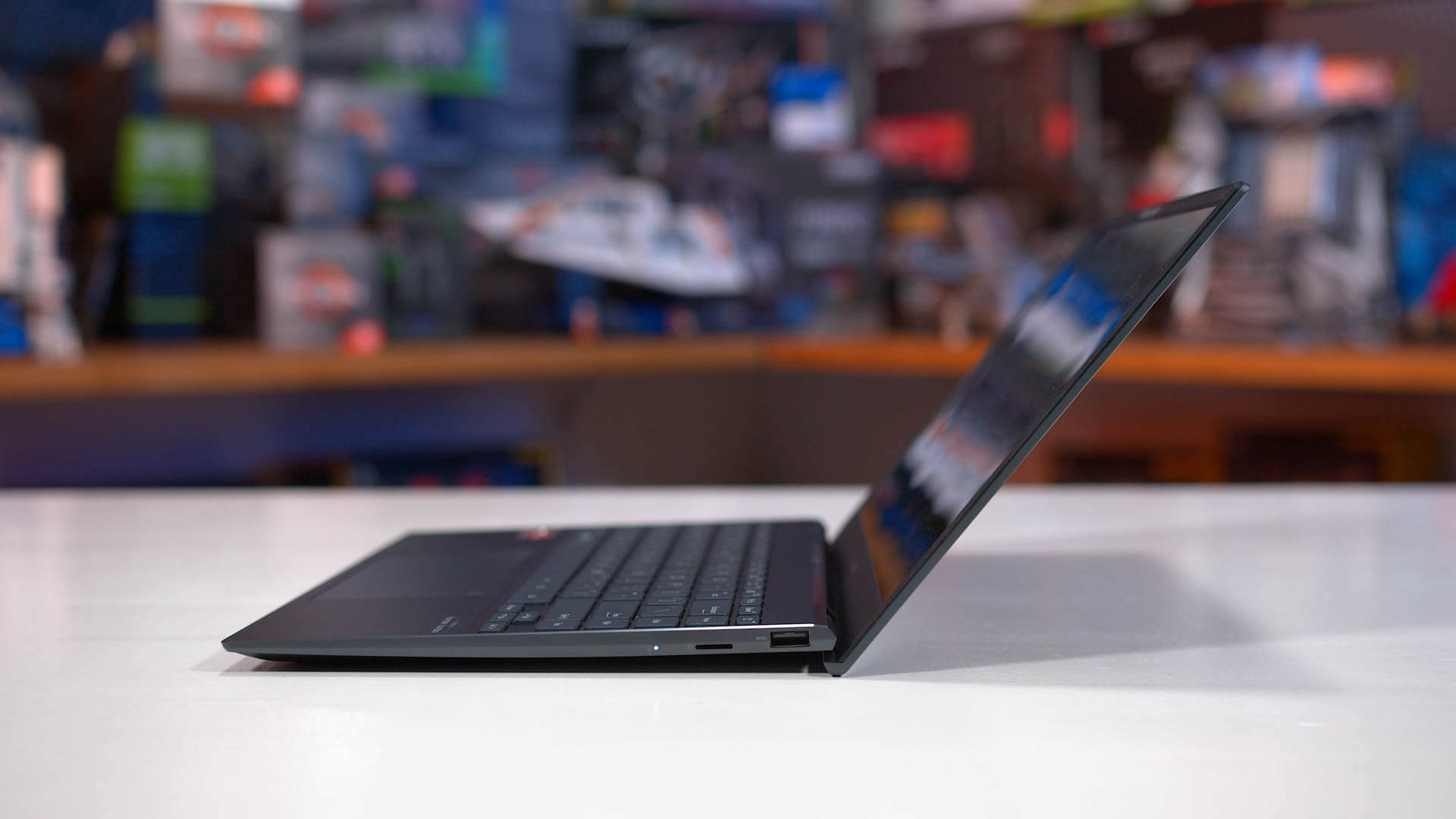
When talking nigh ultraportable APU operation, I tend to break it down into three central areas: multi-threaded, single-threaded, and GPU operation. When nosotros compared Tiger Lake to Ryzen 4000, Intel held the crown in two out of three, which is ultimately why I concluded upwards recommending it to thin and low-cal laptop buyers. Merely at present that we take Ryzen Mobile 5000, the tables have turned and in my opinion AMD has regained its functioning advantage.
What hasn't changed in this comparison is multi-thread CPU performance. AMD continues to hold a remarkably strong pb here, destroying Tiger Lake especially at depression power classes. eight cores up against iv volition do that. Merely what AMD'due south been able to achieve this generation is the single-thread performance to match Intel. This has removed AMD'south weakness in CPU performance, making it harder to recommend Tiger Lake for casual laptop buyers. Surely, in the worst cases, depending on the matchup there are some workloads where Intel's Core i7-1185G7 is faster, just this doesn't make up for quite a heavy defeat in other workloads. I now experience the balance of CPU operation lies strongly with AMD.
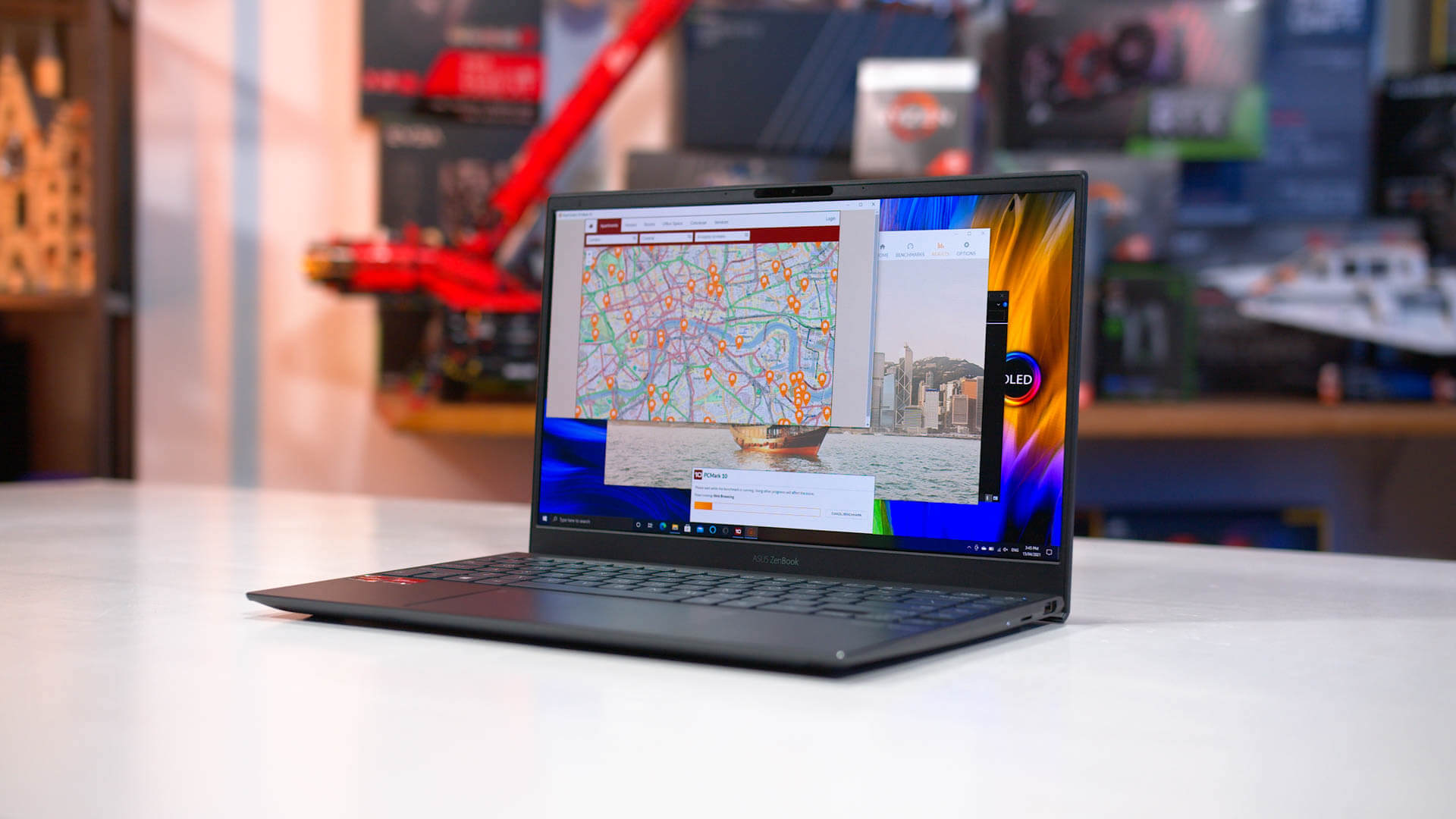
Integrated graphics performance, on the other hand, is a mixed bag. It'south a pretty even boxing at 15W, only Intel is the champion in the college power class where their Xe design is able to shine. This doesn't seem to impact mixed CPU and GPU productivity workloads too much, only Tiger Lake right now is the better choice for integrated graphics gaming.
With that said, in that location are a number of slim and lite thirteen or 14-inch machines being made these days with discrete graphics, whether that's an Nvidia MX350 or even a GTX 1650 Max-Q. And then if gaming is a priority for your ultraportable laptop, honestly I'd try go something with a discrete GPU and the pairing of a Ryzen 7 5800U with an Nvidia discrete GPU would be a very tasty proposition.

While I do recollect AMD has the better overall low-ability CPU pick right at present, this is merely a comparison of chip performance and doesn't factor in much else well-nigh the platform. And information technology's platform features where AMD has generally struggled in. Ryzen is used in fewer premium designs, for instance. Supply has been an consequence earlier and continues to be constrained today. You likely won't go features such equally Thunderbolt, USB 4 or PCIe 4.0 storage with an AMD laptop, which depending on your use case may be important.
You tin't blame AMD for all of these, as information technology's OEMs who ultimately implement the chips, but Intel gives you more choices and generally more than platform features. A design you like just simply may not come with an AMD equivalent.
Shopping Shortcuts
- Ryzen 7 5800U Laptops on Amazon
- Core i7-1165G7 Tiger Lake Laptops on Amazon
- Core i7-1185G7 Tiger Lake Laptops on Amazon
- Ryzen nine 5900HX Laptops on Amazon
- Ryzen 7 5800H Laptops on Amazon
Source: https://www.techspot.com/review/2235-amd-ryzen-5800u/
Posted by: greenwassurs.blogspot.com


0 Response to "AMD Ryzen 7 5800U Review"
Post a Comment